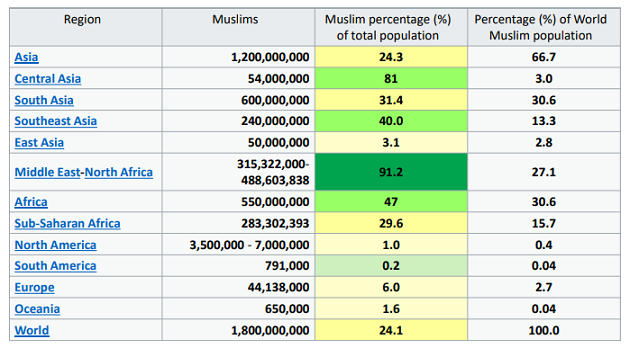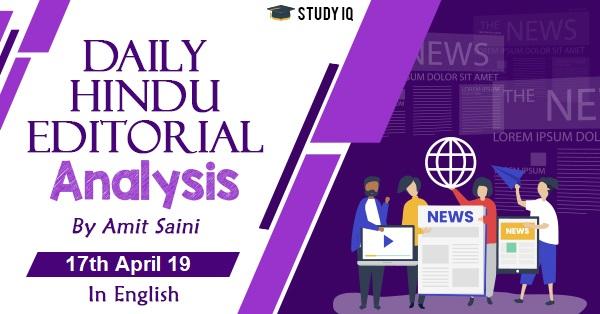Table of Contents
- Notre-Dame, is a medieval Catholic cathedral on the Île de la Cité in the fourth arrondissement of Paris, France
- The cathedral was the site of Coronation of Napoleon I as Emperor of France, who built this.
- Choose correct
(A)Only 1
(B)Only 2
(C)Both
(D)None
- The cathedral was begun in 1160 under Bishop Maurice de Sully and was largely complete by 1260, though it was modified frequently in the following centuries.
- In the 1790s, Notre-Dame suffered desecration during the French Revolution; much of its religious imagery was damaged or destroyed. In 1804, the cathedral was the site of the Coronation of Napoleon I as Emperor of France, and witnessed the baptism of Henri, Count of Chambordin 1821 and the funerals of several presidents of the Third French Republic.
MCQ 2
- Indonesia is the second largest Muslim-majority state in the world
- It got independence from Netherlands in 1945
- Choose correct
(A)Only 1
(B)Only 2
(C)Both
(D)None

MCQ 3
- Many times in news, Rapid Prototyping (RP), Direct Digital Manufacturing (DDM), layered manufacturing and additive fabrication, all these terms are related to
- Satellite manufacturing
- Defence manufacturing
- Biotechnology
- Three Dimensional Printing
- The term 3D printing covers a variety of processes in which material is joined or solidified under computer control to create a threedimensional object, with material being added together (such as liquid molecules or powder grains being fused together), typically layer by layer. In the 1990s, 3D printing techniques were considered suitable only for the production of functional or aesthetical prototypes and a more appropriate term was rapid prototyping. Today, the precision, repeatability and material range have increased to the point that some 3D printing processes are considered viable as an industrial production technology, whereby the term additive manufacturing can be used synonymously with 3D printing. One of the key advantages of 3D printing is the ability to produce very complex shapes or geometries, and a prerequisite for producing any 3D printed part is a digital 3D model or a CAD file.
- There are many different branded 3D printing processes, that can be grouped into seven categories:
- Vat photopolymerization
- Material jetting
- Binder jetting
- Powder bed fusion
- Material extrusion
- Directed energy deposition
- Sheet lamination
MCQ 4
- Measles is a very contagious Bacterial disease
- It is also called rubeola & german measles
- Choose correct
(A)Only 1
(B)Only 2
(C)Both
(D)None
- Measles is an airborne disease which spreads easily through the coughs and sneezes of infected people. It may also be spread through contact with saliva or nasal secretions.
- Nine out of ten people who are not immune and share living space with an infected person will be infected.
- People are infectious to others from four days before to four days after the start of the rash.
- Most people do not get the disease more than once. Testing for the measles virus in suspected cases is important for public health efforts.
- The measles vaccine is effective at preventing the disease, and is often delivered in combination with other vaccines. Vaccination resulted in a 75% decrease in deaths from measles between 2000 and 2013, with about 85% of children worldwide being vaccinated as of 2014.
- Once a person has become infected, no specific treatment is available, although supportive care may improve outcomes.Such care may include oral rehydration solution (slightly sweet and salty fluids), healthy food, and medications to control the fever. Antibiotics may be used if a secondary bacterial infection such as bacterial pneumonia occurs. Vitamin A supplementation is also recommended in the developing world
MCQ 5
- WPI is released by CSO every 2 months
- In India WPI is also known as the headline inflation rate
- There has been proposals to change the base year from 2004 to 2012 but still it is not implemented
Choose correct
(A)1 & 2
(B)2 & 3
(C) Only 2
(D)Only 1
MCQ 6
Cities located on the coast of Mediterranean sea
- Sirte
- Tripoli
- Istanbul
- Benghazi
(A)1,2,3
(B)2,3,4
(C) 1,2,4
(D)All
Clouds on the horizon
- The deteriorating trade climate and the U.S.-China conflict are holding back global growth
- At the recent spring meetings of the International Monetary Fund (IMF) and World Bank, Finance Ministers and central bank Governors by and large played down fears about a slowing global economy.
- Their optimism was based on the pause in the U.S.’s interest rate policy in February, ease in the country’s trade tensions with China, and receding risk of a hard Brexit.
- However, in stark contrast, the IMF has consistently emphasised a cautious stance on the current growth trajectory for some months. As the ultra-low interest rates of the post-crisis years have come to stay in many economies, the IMF has highlighted the limits of monetary policy in a future downturn. Its latest economic forecast cuts the outlook for growth in 2019 to 3.3% from estimates of 3.5% in January and 3.7% in October, when it had cited concerns over trade protectionism and the flight of capital from vulnerable emerging economies.
- These projections were echoed by the IMF chief at the U.S. Chamber of Commerce earlier this month. Christine Lagarde said that whereas two years ago, 75% of the global economy experienced an upswing, the expectation this annum is for a slump in 70% of the world economy. Contributing to the overall deceleration is the deteriorating trade climate of the last two years. The pace of exports and imports was 4.6% in 2017, the strongest since the rebound after the 2007-08 financial crisis. But the 2018 figures were a modest 3% and could fall much further this year, says the WTO.
- In the U.S., where year-on-year growth touched 2.9%, the fund’s forecast is 2.3% in 2019 — a far cry from the 4% rate in the second quarter last year. The Federal Reserve has also lowered its estimate from 2.3% to 2.1%, a sign possibly of the fading impact of President Donald Trump’s 2017 corporate tax cuts.
- A more than anticipated fall in recent German imports and exports is said to reflect, among other things, the impact of the trade friction between the U.S. and China and growing uncertainty over Britain’s exit from the European Union.
- While stopping short of projecting a global recession, the IMF forecasts growth to touch 3.6% in 2020, lower than earlier estimates. That would be underpinned by tepid growth in the advanced world and hopes of a stable Chinese environment. The potential for an acceleration depends on Argentina and Turkey climbing out of a recession, besides a precarious rebound in other emerging and developing economies. During last week’s meeting, the view among Finance Ministers was that the IMF was painting a rather grim picture of the world economy. The hope is that their optimism will be borne out by evidence. Equally, a lasting resolution of the U.S.-China trade dispute would revive momentum in the global economy.
- TEXPROCIL – The international face of Indian Cotton Textiles. Since its inception in 1954, as an autonomous, nonprofit body dedicated to promotion of exports, The, popularly known as TEXPROCIL has been the international face of cotton textiles from India facilitating exports world wide. Texprocil has a membership of around 3,000 companies spread across major textile clusters in India. Its members are well established manufacturers and exporters of cotton textile products like Cotton, Yarns, Fabrics and Home Textiles, showcasing a dazzling array of products across the value chain.
- The Council connects international buyers with appropriate suppliers and facilitates interaction that enables them to source their specific needs. It also provides information on India’s competitive advantages, its export environment and updated position in the global market place.
- The cathedral is consecrated to the Virgin Mary and considered to be one of the finest examples of French Gothic architecture.
- Its innovative use of the rib vault and flying buttress, its enormous and colourful rose windows, and the naturalism and abundance of its sculptural decoration set it apart from the earlier Romanesque style
- Popular interest in the cathedral blossomed soon after the publication, in 1831, of Victor Hugo’s novel NotreDame de Paris (in English, The Hunchback of Notre-Dame).






















 WhatsApp
WhatsApp